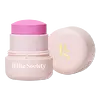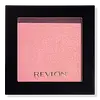What's inside
What's inside
 Key Ingredients
Key Ingredients

 Benefits
Benefits

No benefits
 Concerns
Concerns

 Ingredients Side-by-side
Ingredients Side-by-side

Caprylic/Capric/Stearic Triglyceride
Skin ConditioningSilica
AbrasiveMica
Cosmetic ColorantHydrogenated Polyisobutene
EmollientOctyldodecanol
EmollientPolyhydroxystearic Acid
EmulsifyingEuphorbia Cerifera Wax
Behenyl Behenate
EmollientSorbitan Isostearate
EmulsifyingSucrose Tetrastearate Triacetate
EmollientCaprylyl Glycol
EmollientDisteardimonium Hectorite
StabilisingPropylene Carbonate
SolventTocopheryl Acetate
AntioxidantSalicornia Herbacea Extract
Skin ConditioningTocopherol
AntioxidantCI 77163
Cosmetic ColorantCI 77891
Cosmetic ColorantCI 45410
Cosmetic ColorantCI 42090
Cosmetic ColorantCI 19140
Cosmetic ColorantCaprylic/Capric/Stearic Triglyceride, Silica, Mica, Hydrogenated Polyisobutene, Octyldodecanol, Polyhydroxystearic Acid, Euphorbia Cerifera Wax, Behenyl Behenate, Sorbitan Isostearate, Sucrose Tetrastearate Triacetate, Caprylyl Glycol, Disteardimonium Hectorite, Propylene Carbonate, Tocopheryl Acetate, Salicornia Herbacea Extract, Tocopherol, CI 77163, CI 77891, CI 45410, CI 42090, CI 19140
Ingredients Explained
These ingredients are found in both products.
Ingredients higher up in an ingredient list are typically present in a larger amount.
This synthetic powder is used to add a pearly/white color in cosmetics.
Mica is a naturally occurring mineral used to add shimmer and color in cosmetics. It can also help improve the texture of a product or give it an opaque, white/silver color.
Serecite is the name for very fine but ragged grains of mica.
This ingredient is often coated with metal oxides like titanium dioxide. Trace amounts of heavy metals may be found in mica, but these metals are not harmful in our personal products.
Mica has been used since prehistoric times throughout the world. Ancient Egyptian, Indian, Greek, Roman, Aztec, and Chinese civilizations have used mica.
Learn more about Mica